December 15, 2022
Today in Microsoft Flight Sim, I’m back to flying the Spitfire again – but this time the original Mk Ia version which fought in the Battle of Britain.
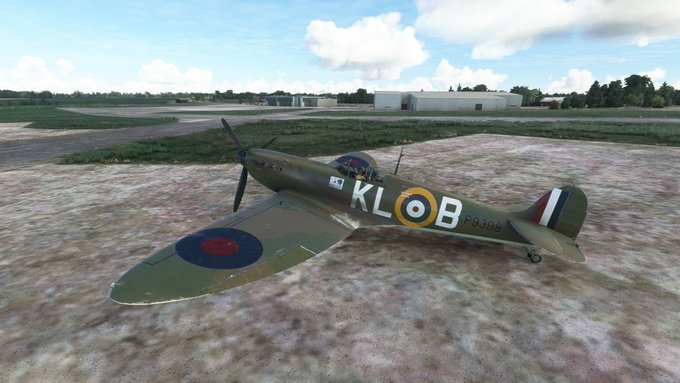
You might recall that a flew a much later model Spitfire, one with a unique post-war story, here:
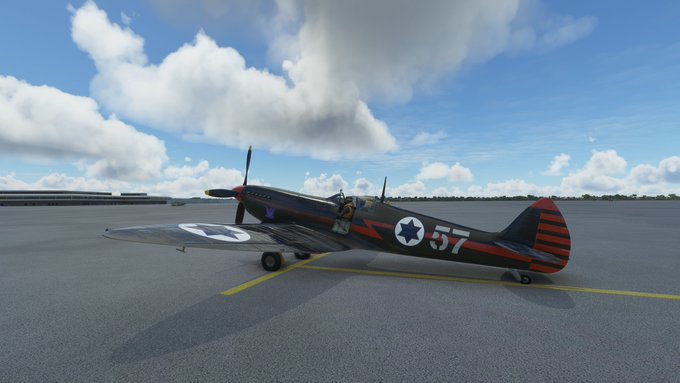
This Spitfire also has a special story. KL-B (P9398) belonged to the 54th Squadron. We’ve joined it here at RAF Manston, right on the southeast tip of England, which served as their forward base at the height of the Battle of Britain.
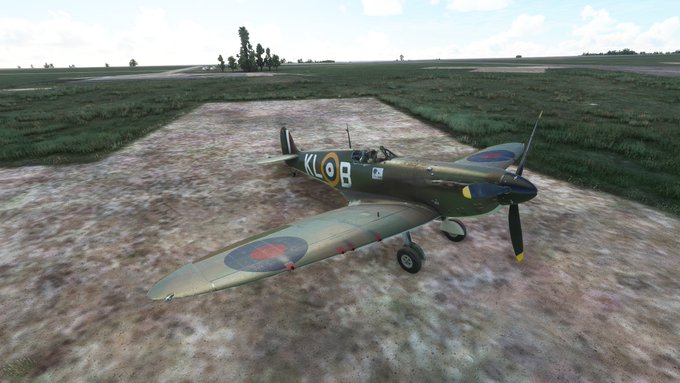
The Spitfire was designed by R. J. Mitchell, based on a racing seaplane he designed in the early 1930s. It first flew in 1936, and were delivered for service just in time for the outbreak of World War II.
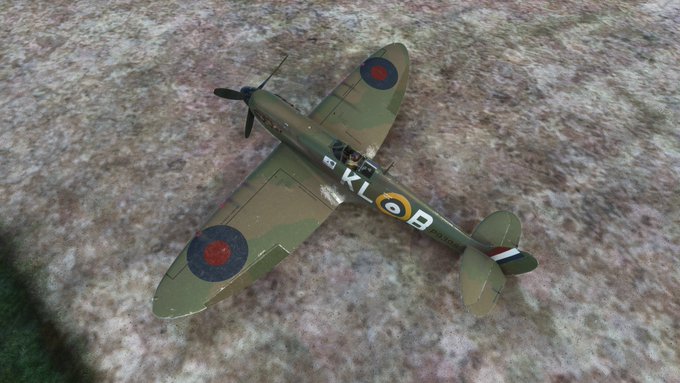
The Spitfire’s most distinctive feature was its elliptical wing, which enabled it to meet two conflicting requirements: to be thin and streamlined enough to minimize drag, but thick enough at the base to house retractable landing gear and machine guns.
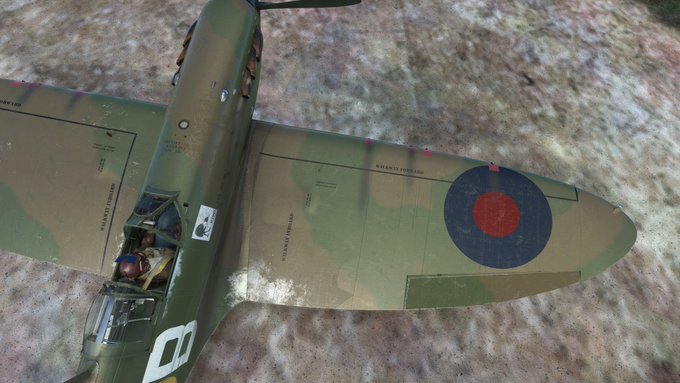
The first Spitfires had eight .303in Browning machine guns, each with 300 rounds, mounted inside the wings. This was sufficient during the Battle of Britain, but not against later German fighters with more armor.
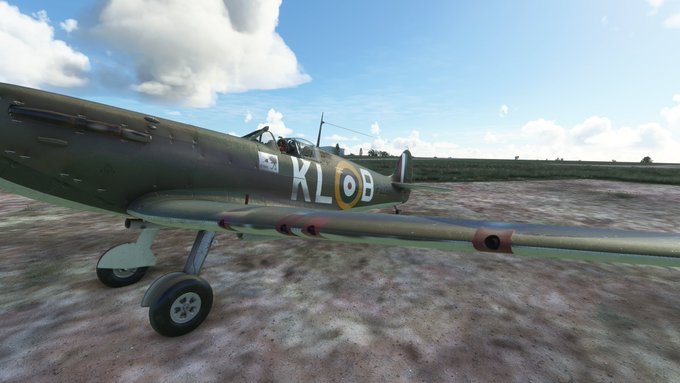
They were powered by Rolls Royce Merlin II or III liquid-cooled, 12-cylinder piston engines, with a single stage supercharger, producing just over 1,000 horsepower. These engines were upgraded in later models as the war continued.
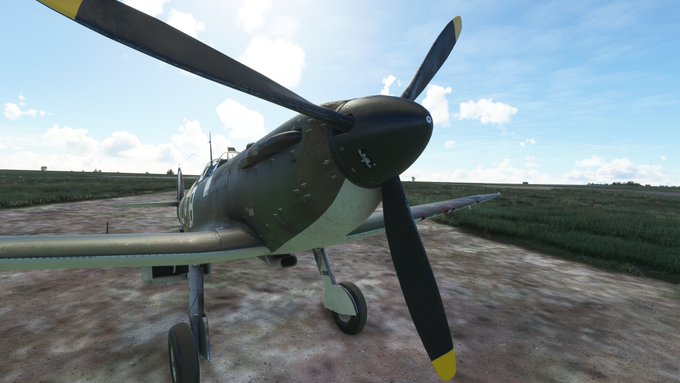
I’ve already given a short tour of the Spitfire cockpit in the earlier post, so go check it out there.
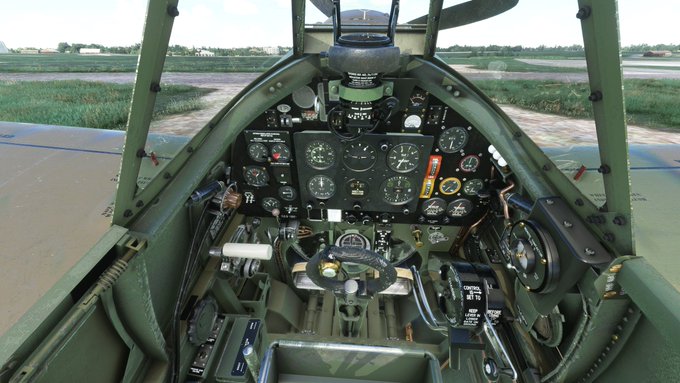
KL-B was flown by Alan Deere, a 22-year old New Zealander who joined the RAF in 1937. That’s why there’s a Kiwi painted on his Spitfire.
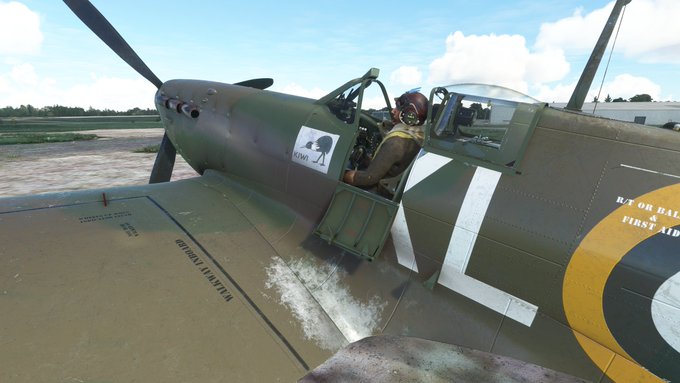
The pilots of the No. 54 Squadron RAF received their first Spitfires in March 1939 and began flying patrols over the English Channel from the very outset of the war in September, after Hitler invaded Poland.
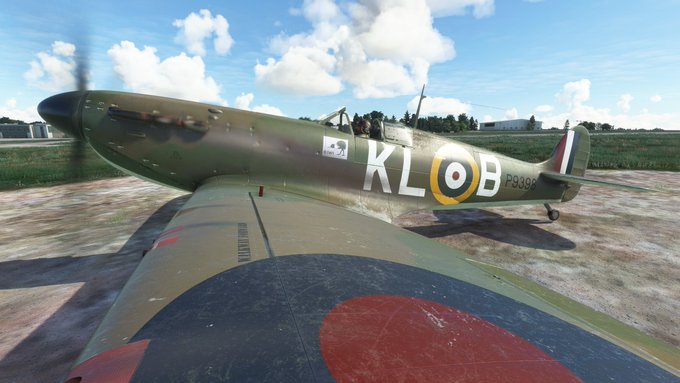
As I’ve mentioned before, the Spitfire is notoriously difficult to take off and land – or even taxi – because of the narrowness of its wheel base, because the landing gear folds down from the outside.
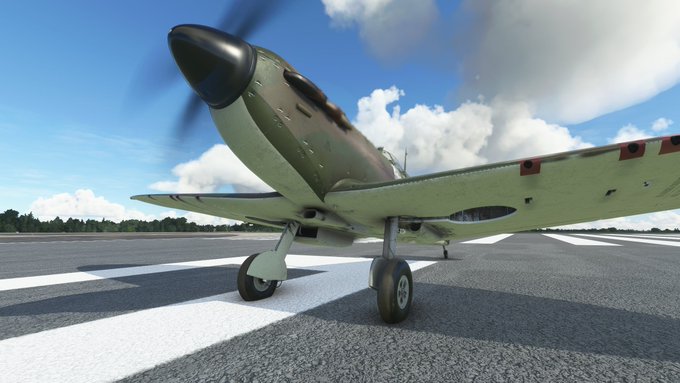
That and the leftward torque from the propeller means that on take off, you constantly have to anticipate the need to give the rudder a good kick, in either direction, to keep it centered. (Short hard kicks work better than steady pressure, which will almost always overshoot).
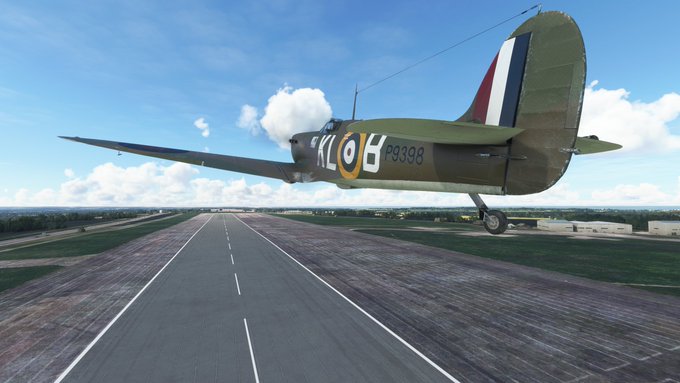
Taking off from RAF Manston. The smaller road running to the left of the runway is named Spitfire Way.
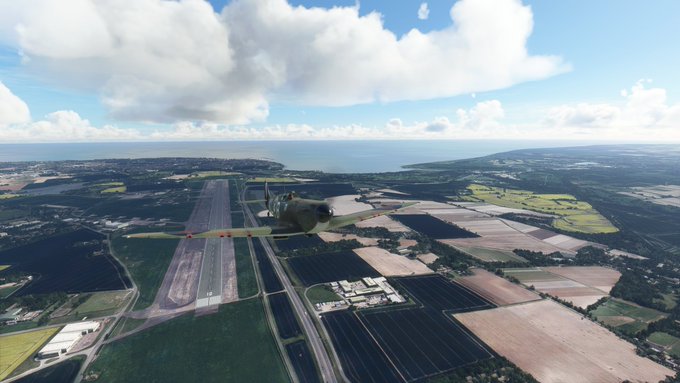
The first real action No. 54 Squadron saw was providing air cover for the evacuation of Dunkirk in May 1940. So I’m turning to cross the English Channel now.
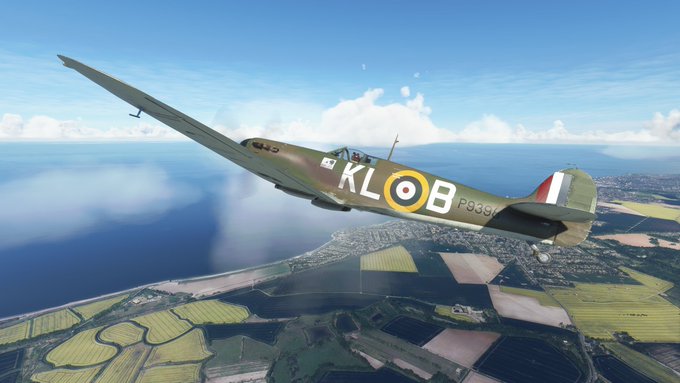
On May 23, Deere (in KL-B) escorted a small trainer to Calais to rescue a squadron commander who had to make a forced landing there. He scored his first two air victories, shooting down to German Bf109 fighters and damaging a third that tried to intercept them.
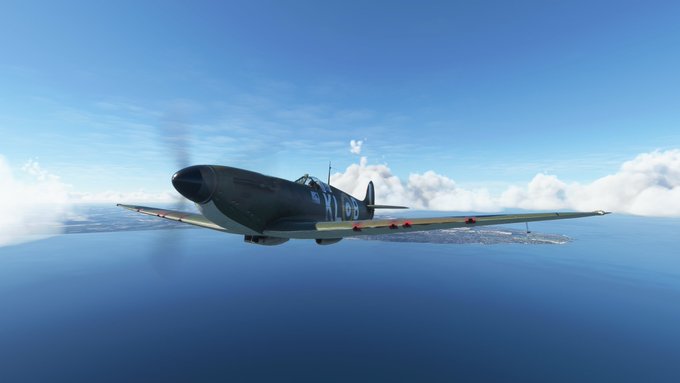
The very next day, he attacked a group of German bombers and escort fighters near St. Omer, and shot down another Bf109 when the Germans counterattacked.
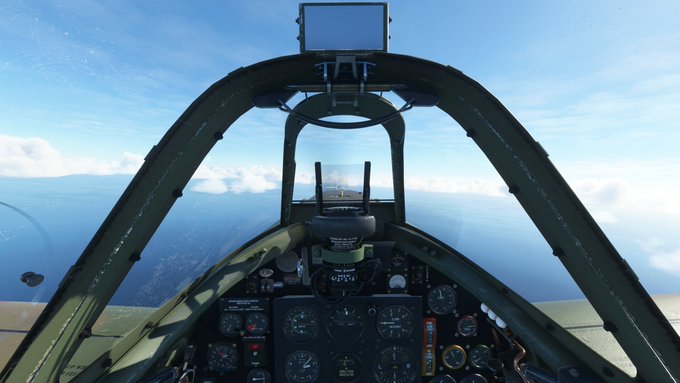
Two days later, on May 26, Deere attempted to intercept German bombers attacking a British destroyer, and shot down two Me110 heavy fighters that tried to intervene, though his own plane was badly damaged.
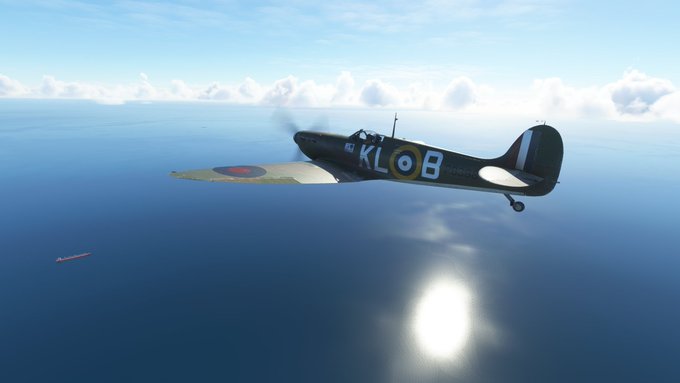
n just four days over the English Channel, Alan Deere had become one of the first aces of the war.
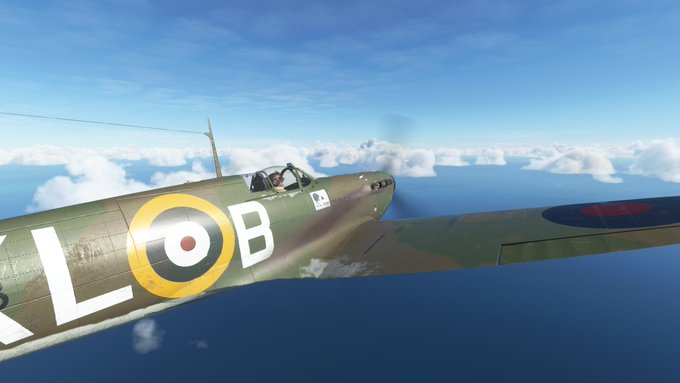
Deere found the Spitfire evenly matched with its German rival, the Messerschmitt Bf109. The latter “was faster in the dive, but slower in the climb; the Spitfire could out-turn but it was at a disadvantage in manoeuvres that entailed negative G forces”.
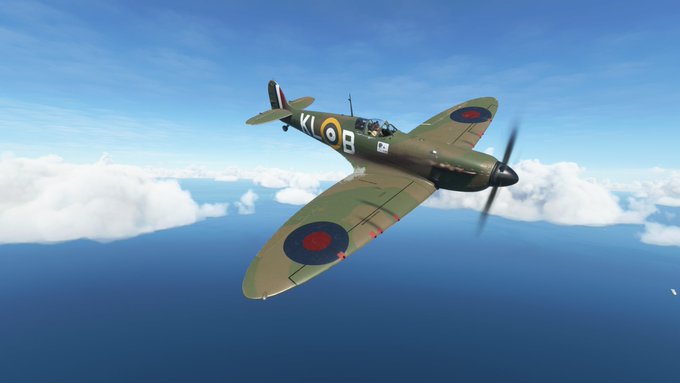
In other words, it was the skill of the pilots that made the difference in an encounter.
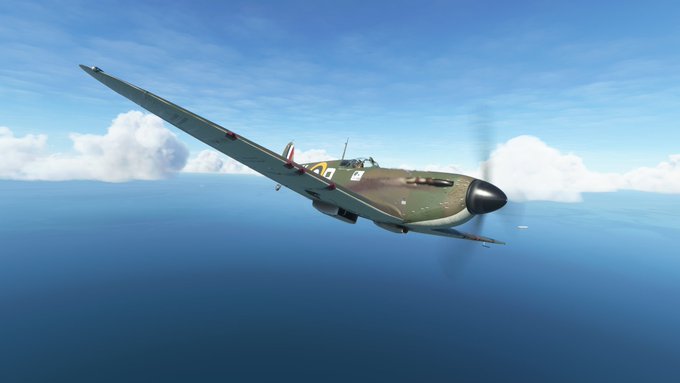
When France fell, roughly 400,000 British troops were trapped at Dunkirk on the French coast, outnumbered 2-to-1 by the surrounding German forces.
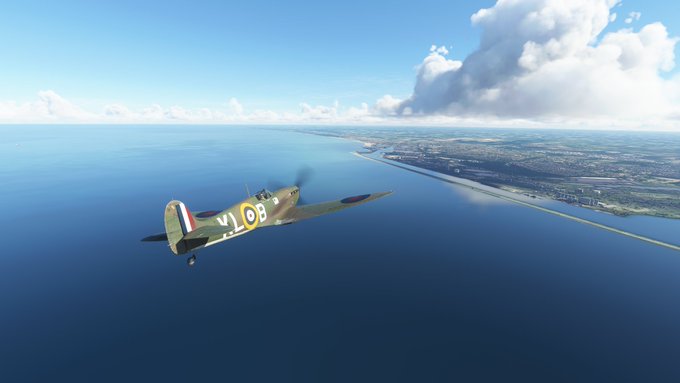
In Operation Dynamo, between May 26 and June 4, over 330,000 were successfully evacuated from the beaches and piers by a hastily assembled armada of British military and civilian ships.
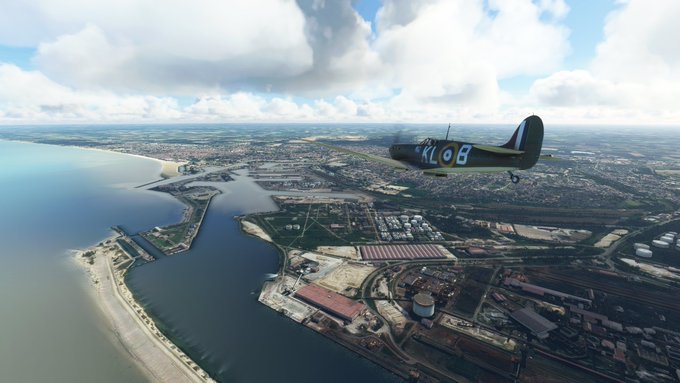
The No. 54 Squadron RAF helped provide crucial air cover, without which the troops and ships at Dunkirk would have been entirely at the mercy of German aircraft.
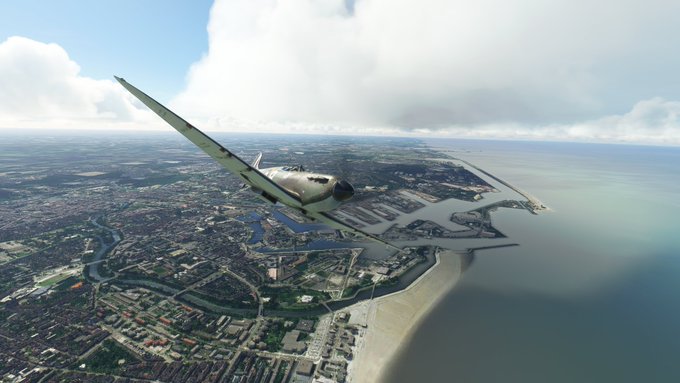
While Dunkirk was far from a victory, it prevented the loss of an entire British army that would have left England crippled after the fall of France.
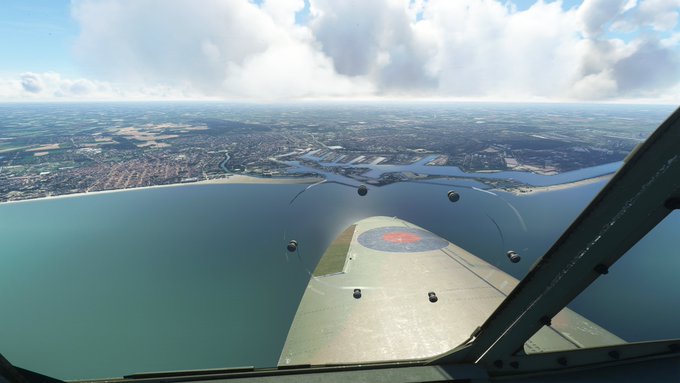
During the Dunkirk evacuation, the pilots of No. 54 Squadron flew several missions a day over to the French side of the Channel.
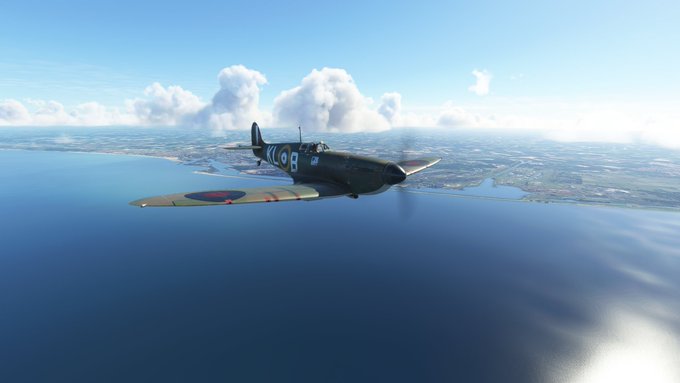
On an afternoon patrol on May 27, Deere shot down a Junkers Ju 88 dive bomber attacking a hospital ship, and helped shoot down another.
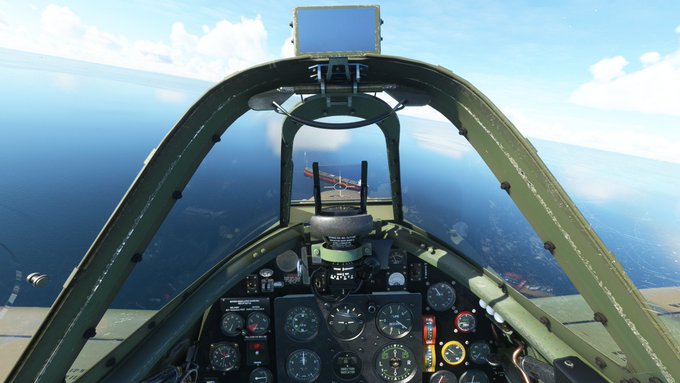
The next day, Deere’s plane was damaged by enemy machine gun fire and he was forced to land on a Belgian beach. He hitched a lorry ride to Dunkirk, boarded a boat, and was back flying again the next day.
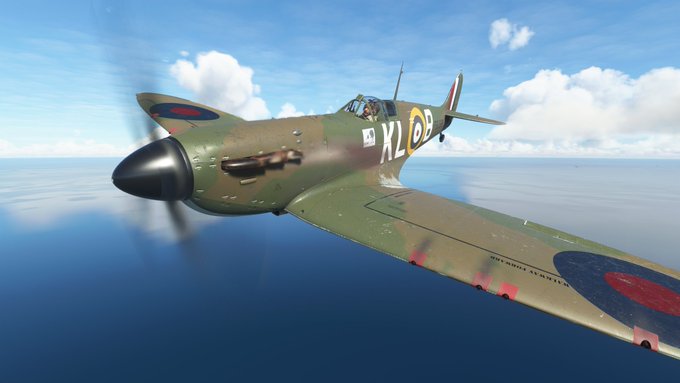
In each engagement over the Channel, Spitfire pilots had to keep one eye on their fuel gauge, otherwise their engine would sputter out before making it back to the English coast.
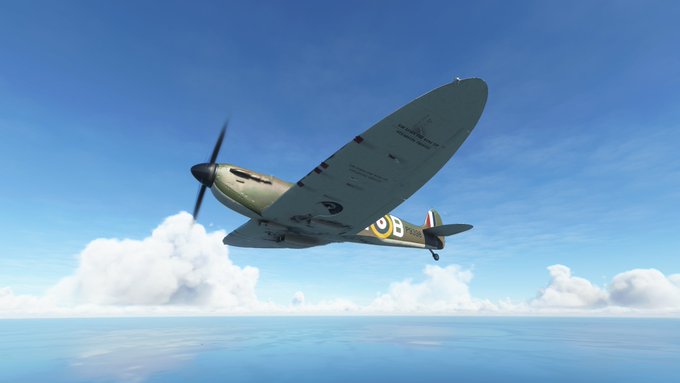
By the end of Operation Dynamo, No. 54 Squadron was down to eight planes, and the unit was sent for a well-deserved rest in Yorkshire. Deere was awarded the Distinguished Flying Cross, presented by King George VI himself.
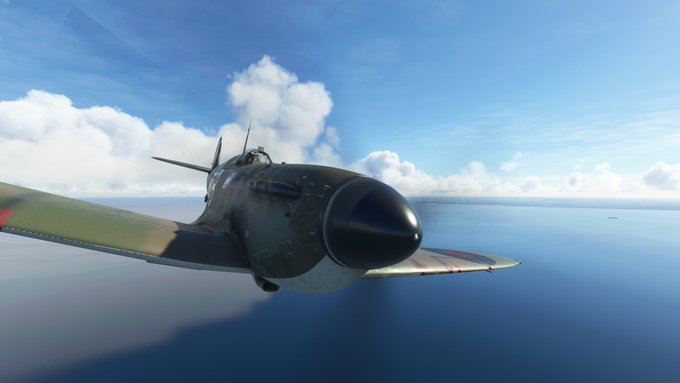
By July, however, the unit was back in action flying patrols over the English Channel, in preparation for Germany’s planned invasion of Britain.
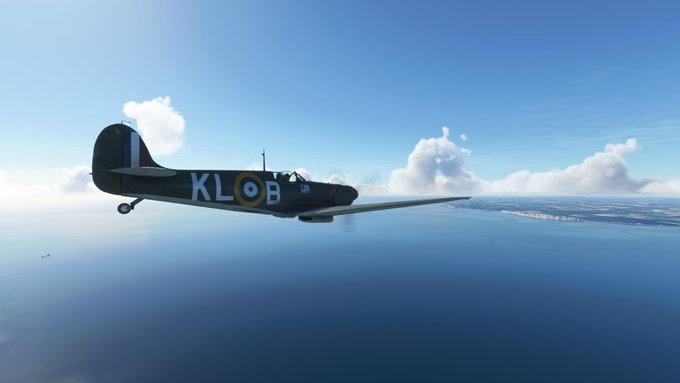
Deere being presented with his DFC by King George on June 27, 1940.
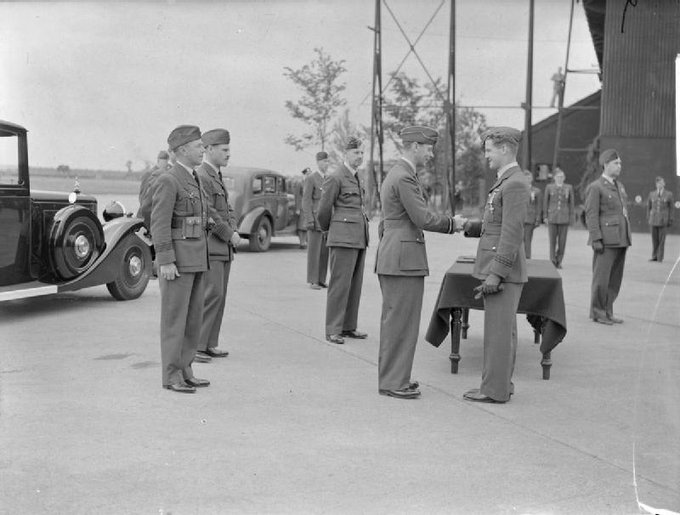
For a German invasion fleet – or paratroopers – to cross the Channel, the Luftwaffe had to control the skies over Britain. The one thing standing in their way was the Royal Air Force – and in particular, the interceptors of Fighter Command.
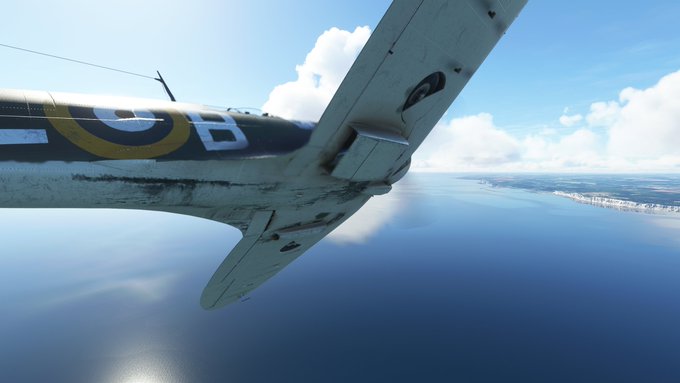
Rather than flying regular patrols, hoping to find German planes, the British fighters were only scrambled in response to early warning of raids detected by coastal radar stations, a new British weapon.
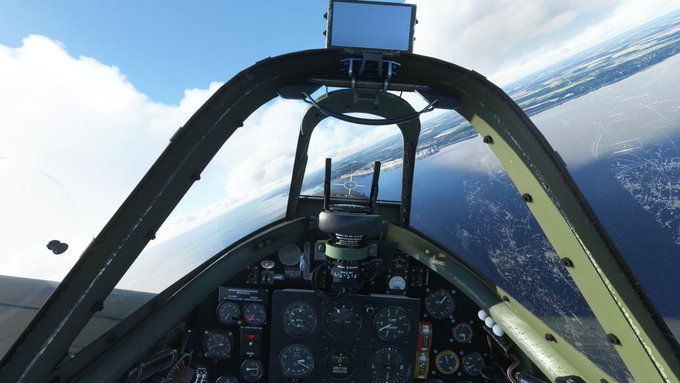
The British fighters were then directed by coordinators on the ground to intercept the German bombing raids. In this way, the RAF was able to do more with less, making maximum use of the planes they had.
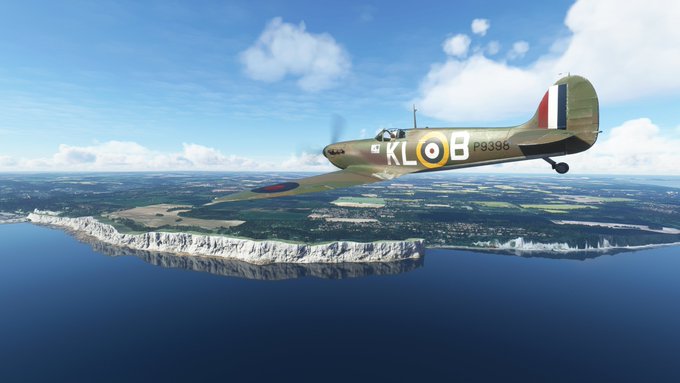
The Germans focused on bombing the British airfields, which were quickly repaired and put back into action. The vital – and far less easily replaced – radar stations went largely unscathed.
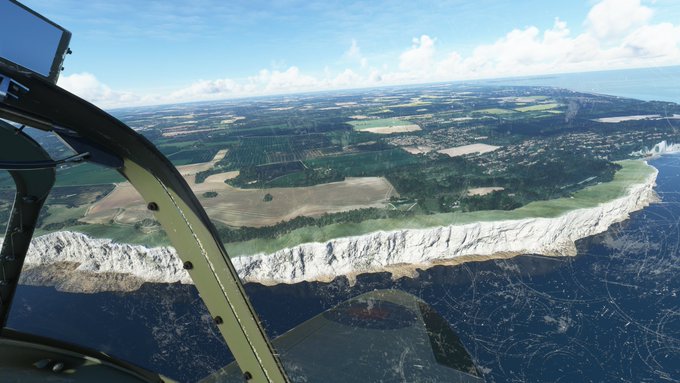
Alan Deere and No. 54 Squadron, forward based out of RAF Manston, was at the very forefront of intercepting constant German bombing raids as they crossed the English coast near Dover.
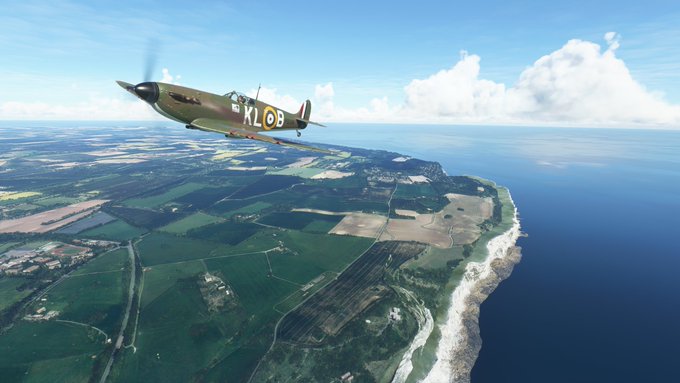
An underground bunker beneath Dover Castle (which I once had the chance to visit) served as an important command center during the Battle of Britain. Observers there could watch the aerial dogfights unfolding right before their very eyes, over the Channel.
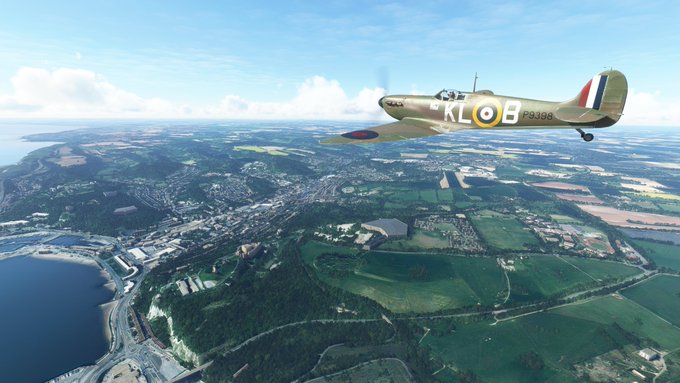
A painting by Paul Nash of what ground observers saw during the Battle of Britain.
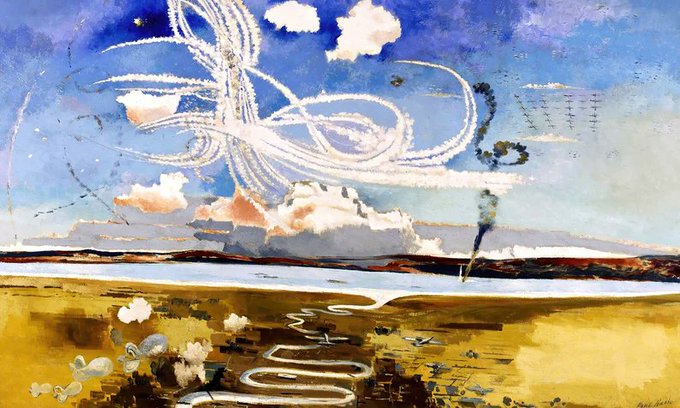
British pilots now had a critical advantage. Since they were fighting over the English coast, they had more fuel, and when they were shot down they could often bail out and be back in a new plane later that day. German pilots, in contrast, were captured and out of action.
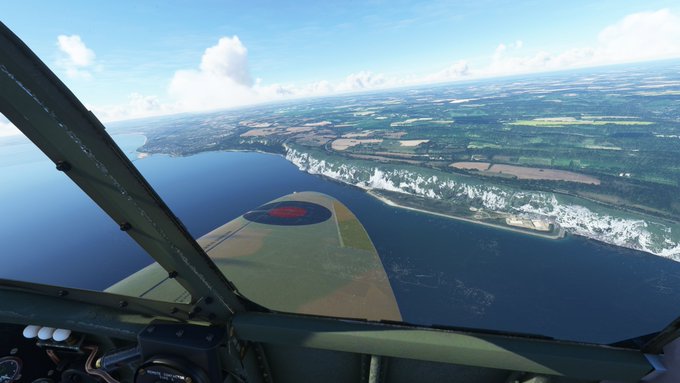
To keep those pilots in the air with replacement planes, British aircraft factories worked around the clock, despite occasionally being hit by German bombing raids. It was a close-run thing.
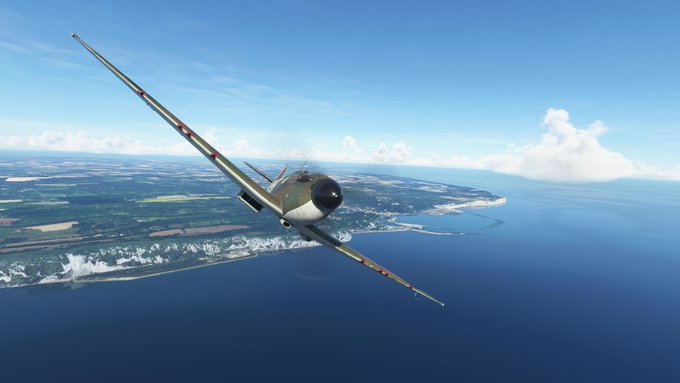
Deere was shot down several times, and was also bombed on the runway by German bombers, which led to him being hospitalized. By September, No. 54 Squadron was so ravaged it was out of the fight, and sent to the rear to recover.
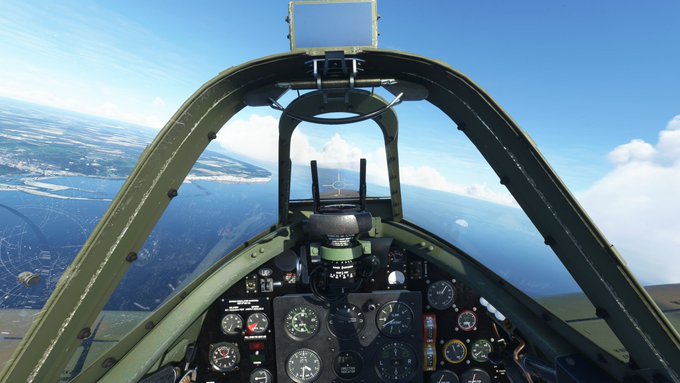
But Deere had shot down several more German planes himself. In total, since the beginning of 1940, his squadron had accounted for at least 92 enemy aircraft.
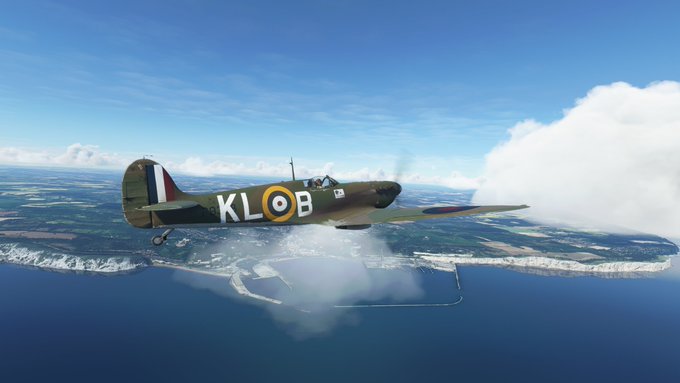
The German invasion was stopped, though the Luftwaffe continued to terror-bomb English cities. Hence Churchill’s famous quote, regarding the pilots of the RAF:
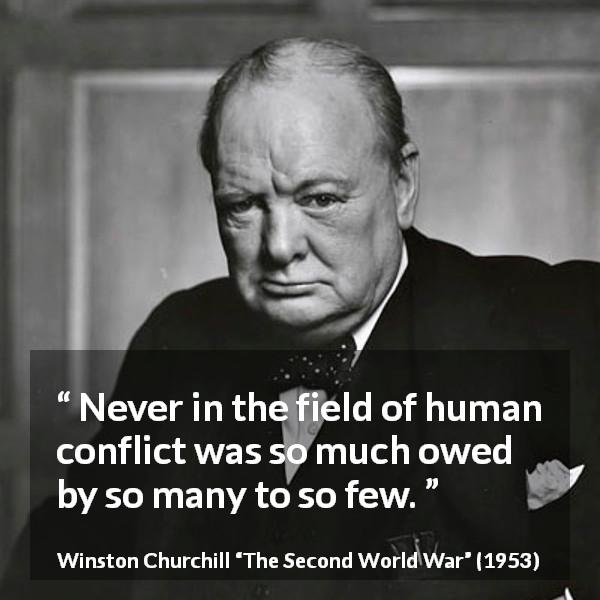
Alan Deere on the right, standing alongside fellow Battle of Britain pilot Denis Crowley-Milling, 1940
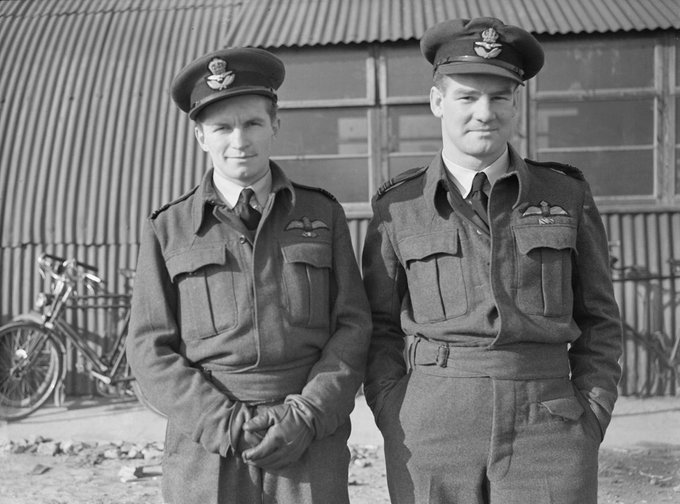
By the end of the war, Deere was credited with the destruction of 22 enemy aircraft, making him the 2nd-highest scoring New Zealand fighter ace (though this was later revised down to 17).
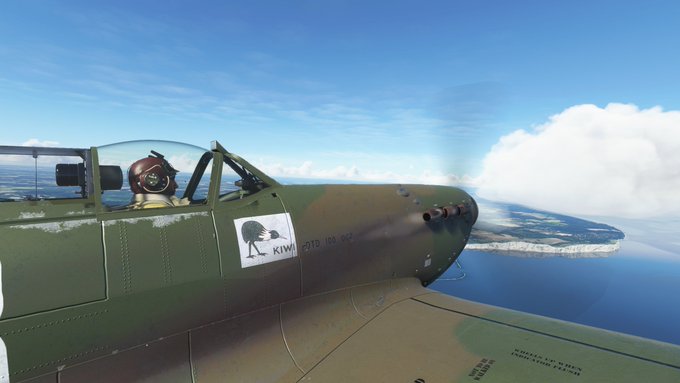
Deere was promoted to Squadron Leader, then Wing Leader, and commanded the Free French squadrons flying Spitfires during the D-Day invasion.
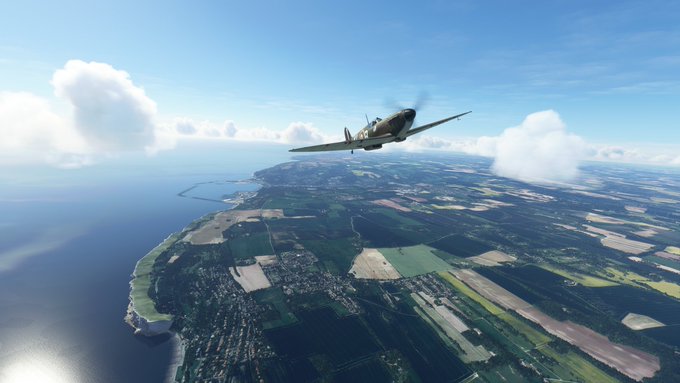
Alan Deere survived the war, and continued to live in England, where he served as the RAF’s sports director until he retired. He died in 1995, age 77.
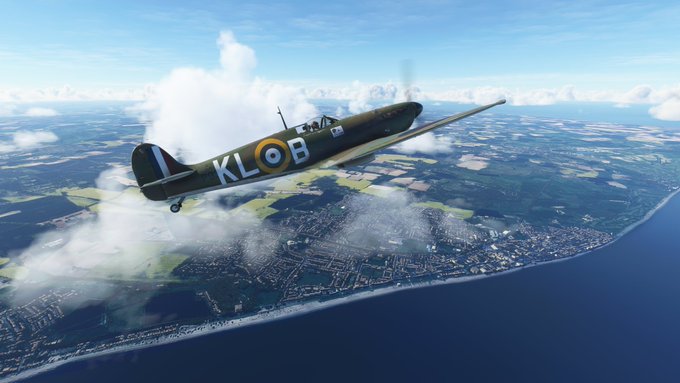
It’s time to land back at Manston, to refuel and await the next alert to scramble into the sky.
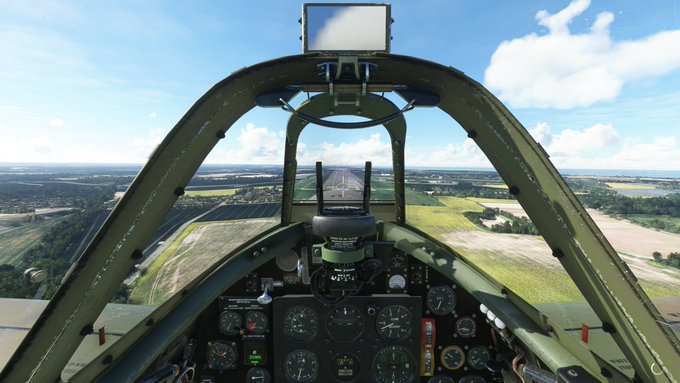
As always, a pretty squirrelly landing in the Spitfire. But one I could walk away from (and no ground loop)!
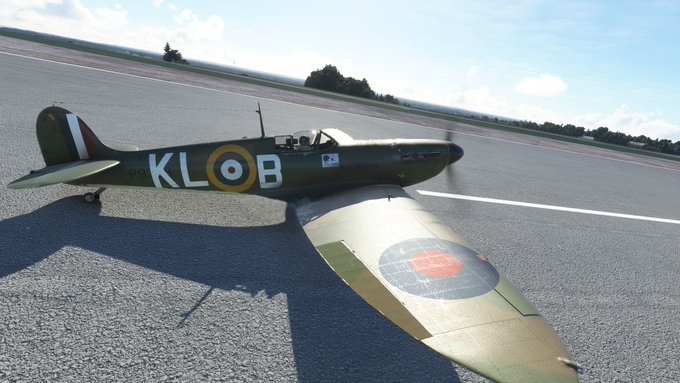
And again, as always, I hope you enjoyed a short tribute to a unique plane and a unique pilot.
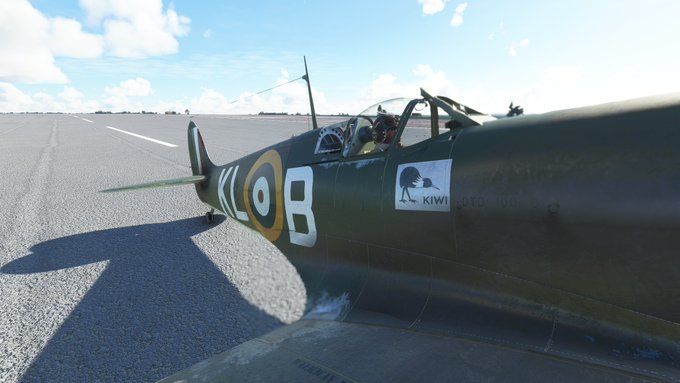
Leave a Reply